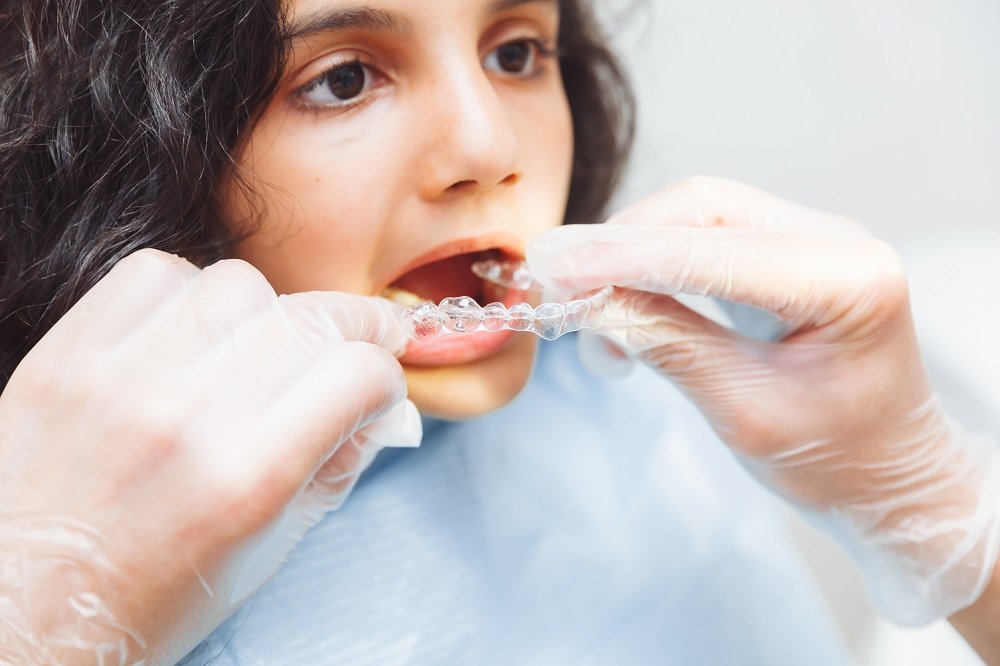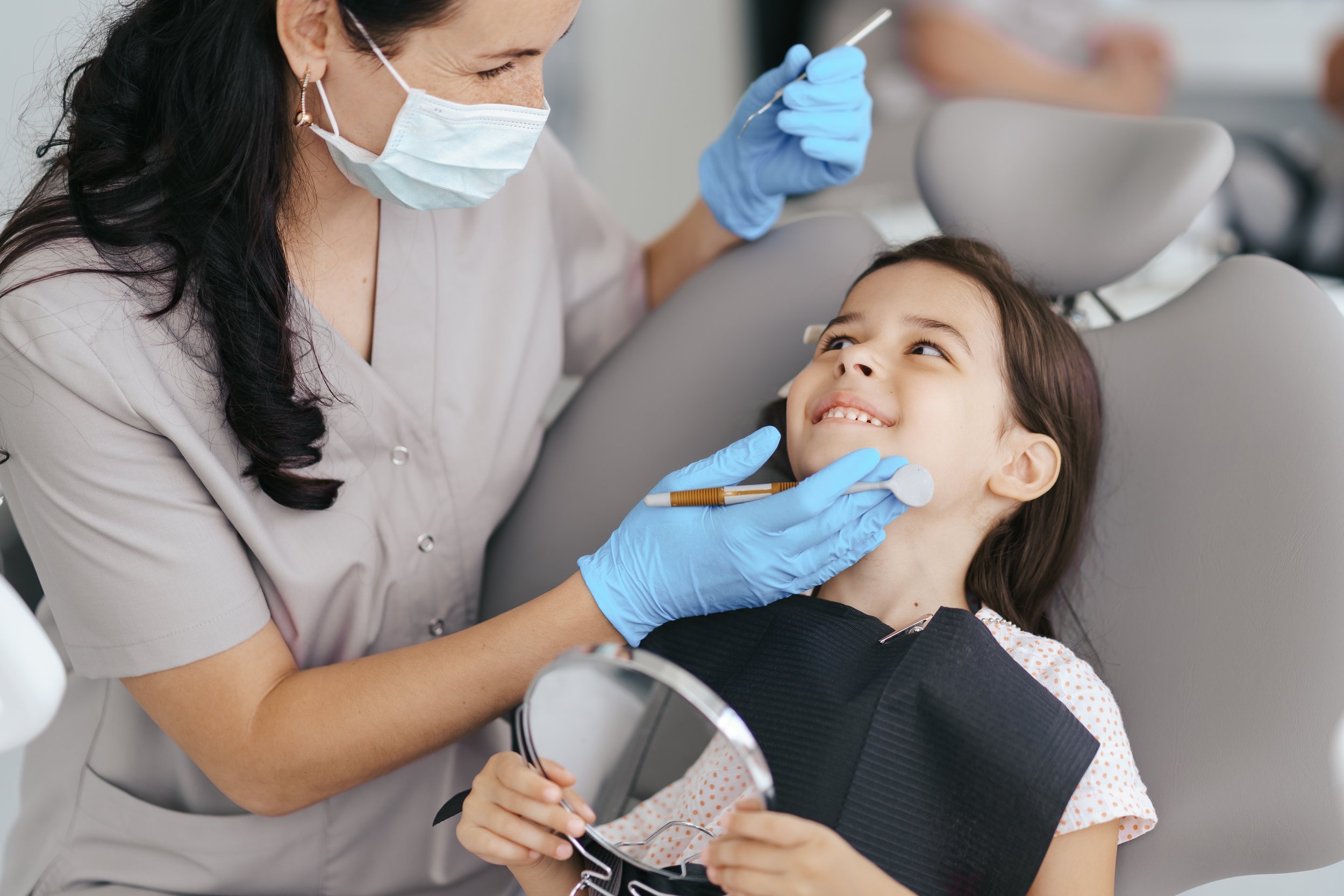The Apple of your eye needs and deserves some extra care when it comes to its baby teeth!
Seeing your baby’s first tooth can be a memorable milestone. Most toddlers develop their primary teeth in the first 6 months. Tiny teeth can emerge as early as three months. Taking early care of baby teeth is crucial as it affects the health of their permanent teeth.
Cavities and other oral-health-related issues can happen when your baby has teeth. So, early care is essential.
In this blog today, we have discussed the common pediatric issues in babies and how early visits to a pediatrician are highly recommended.
The Significance of Pediatric Dental Care
Many parents underestimate the importance of dental care for their infants and toddlers. However, best pediatric dentistry is closely linked to overall health and development. Baby teeth, also known as primary teeth, serve several essential functions:
Facilitating Proper Nutrition: Baby teeth enable infants to chew food properly, aiding digestion and ensuring they receive essential nutrients for growth and development.
Speech Development: Primary teeth play a crucial role in speech development. They help children articulate sounds and form words correctly, laying the foundation for clear communication.
Guiding Permanent Teeth: Baby teeth act as placeholders for permanent teeth. Maintaining their health and alignment is essential for ensuring proper spacing and alignment of permanent teeth as they erupt.
Self-Esteem and Confidence: Healthy teeth improve a child's self-esteem and confidence. A bright, healthy smile can boost their social interactions and overall well-being.
Given the significance of baby teeth, it's vital to prioritize the best pediatric dentistry and dental care from an early age.
Common Pediatric Dental Issues to Look Out For
Cavities (Tooth Decay):
Cavities are not just a concern for adults; they can affect children, too. Sugary foods, poor oral hygiene, and bacteria can lead to tooth decay in young ones. Regular dental check-ups and proper brushing can help prevent cavities.
Dental Emergencies:
From knocked-out teeth to severe toothaches, dental emergencies can happen unexpectedly. Knowing how to handle these situations and having a pediatrician who can provide prompt care is crucial for your child's dental health.
Tooth Sensitivity:
Sensitive teeth can make eating and drinking uncomfortable for children. Various factors, including enamel erosion or tooth decay, could cause it. Consulting a pediatrician can help identify the root cause and provide appropriate treatment.
Gum Disease & Gingivitis:
Gum disease and gingivitis are not just adult problems. Poor oral hygiene and plaque buildup can also lead to these conditions in children. Regular dental visits and proper oral care routines can help prevent gum issues.
Excessive Thumb Sucking:
While thumb sucking is a common habit among infants, excessive thumb sucking can affect dental development. Pediatricians can offer guidance on how to manage and eventually stop this habit.
Dental Anxiety & Phobias:
Fear of the dentist is not uncommon among children. Pediatricians are trained to create a comfortable and reassuring environment for young patients, helping alleviate dental anxiety and phobias.
Teeth Grinding:
Teeth grinding, also known as bruxism, can occur during sleep and may lead to dental problems if left untreated. Pediatricians can diagnose and address this issue, often through behavioral interventions.
Lip Sucking:
Lip sucking is another oral habit that can impact dental development. Pediatricians can provide strategies to help children break this habit and maintain healthy teeth and gums.
Role of a Pediatrician in the Early Years of Your Child
During the early years of your child's life, a pediatrician plays a crucial role in monitoring their growth and development, including dental health. Pediatricians can:
Regular check-ups should be conducted to assess dental development and address any concerns.
Offer guidance on oral care routines, including brushing techniques and dietary recommendations.
Identify and treat common dental issues early on, preventing them from escalating into more significant problems.
Refer to pediatric dentists or specialists when necessary for specialized care.
How to Choose the Best Pediatrician for Your Child
When selecting a pediatrician for your child, consider the following factors to ensure they receive the best possible care:
Credentials and Experience:
Look for pediatricians with relevant qualifications and experience caring for children's dental health.
Compatibility and Communication:
Choose a pediatrician who communicates effectively with you and your child, making the dental experience positive and stress-free.
Environment of the Office:
The office environment should be child-friendly, with amenities and activities to keep young patients comfortable and entertained.
Approach to Care:
Consider a pediatrician's approach to preventive care and treatment methods, ensuring they align with your preferences and values.
Emergency and After-Hours Care:
Find out about the pediatrician's availability for emergencies and after-hours care, ensuring prompt attention.
Continuity of Care:
Consistency in care is essential for your child's dental health. Choose a pediatrician who offers continuity of care and builds long-term relationships with patients.
Insurance Coverage and Financial Considerations:
Check whether the pediatrician accepts your insurance plan and inquire about any out-of-pocket costs for dental services.
Valley Creek: Committed to your little one’s Dental Health
Valley Creek’s Pediatric Dentistry in McKinney is dedicated to safeguarding your little one's dental health. Our team understands the unique needs of children and strives to create a nurturing and welcoming environment for every visit. With a focus on preventive care and education, we aim to instill healthy oral habits early on.
From routine check-ups to specialized treatments, we're here to support your child's dental journey every step of the way.
Trust Valley Creek Pediatric Dentistry McKinney to provide compassionate and comprehensive dental care for your precious little one. Your child's smile is our priority.






